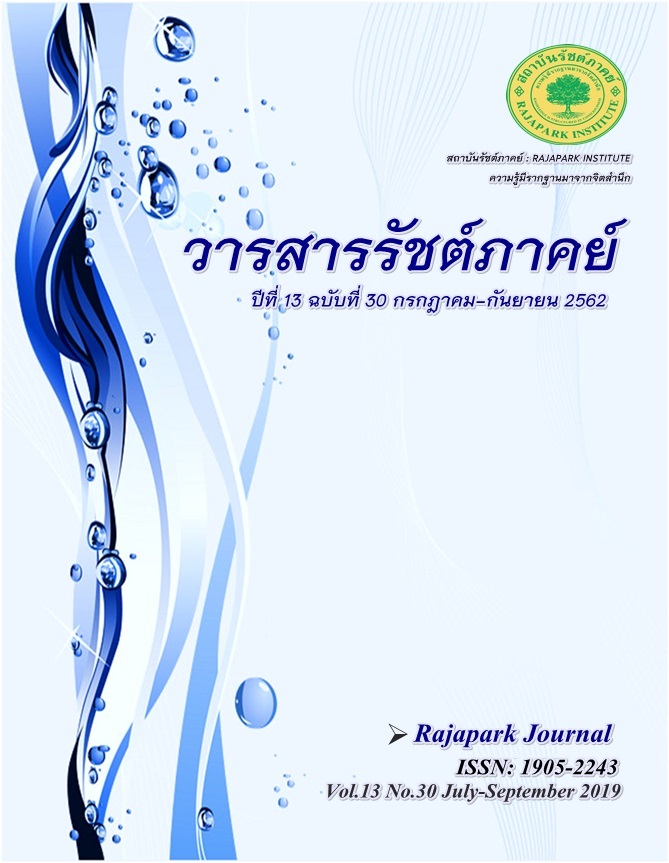Development Challenges for Religious Arts on the Thonburi Bank of the Chao Phraya River
Main Article Content
Abstract
From long-term observation of the riverfront communities of Thonburi and of their apparent success, the following research question was derived, both motivating and guiding the present project: Does the Thonburi community manifest significant key values that might explain its historical success in multi-ethnic, multicultural and multi-religious tolerance and co-habitation, and thence to reveal if there are lessons to be drawn from this success regarding ways of living together, also to become integrated into existing community structures? There has been a further, underlying question: do the lessons to be drawn from Thonburi’s historic tolerance and community peace have potential for translation to other levels where conflict prevails in Thailand’s society? In pursuing this broad question, the following more specific objectives have been set: 1) To study cultural and social context influencing religious places on the Thonburi side of the Chao Phraya River, and 2) To study the features of artistic works in religious places of Buddhism, Christianity and Islam in the communities on the Thonburi side of the Chao Phraya River area in relation to cultural and social context. One set of questionnaires and interviews was developed and used as a research instrument. Experts and elderly people living in the community participated in the in-depth interviews. The on-site observations and data collections were classified by content analyses and verified by data triangulation techniques. The results of the study can be presented in three parts: 1) Thonburi as emblem of Thai culture: tolerance, acceptance: a discussion on how Thonburi manifests a multicultural tolerance or sense of mutual accommodation running through the society, then 2) Thonburi as centre of creativity: a similar discussion on the richness and diversity of artistic inventiveness and production revealed through the present displays of Thonburi, and 3) Thonburi as living museum and the tourist experience: how Thonburi’s richness is to be ‘managed’. Finally there is a discussion to the broader question of key manifested values and to the project’s transferability to other spheres of Thailand’s life.
Article Details

This work is licensed under a Creative Commons Attribution-NonCommercial-NoDerivatives 4.0 International License.
Views and opinions appearing in the Journal it is the responsibility of the author of the article, and does not constitute the view and responsibility of the editorial team.
References
Herzfeld, M. (2016). Siege of the Spirits: Community and Polity in Bangkok. Chicago and London: University of Chicago Press.
King, R. (1996). Emancipating Space: Geography, Architecture, and Urban Design. New York: Guilford Press.
King, R. (2011). Reading Bangkok. Singapore: NUS Press.
King, R. (2017). An accidental Bangkok theme park. Tourism Geographies: An International Journal of Tourism Space, Place and Environment, 19(5), 717-733. [Doi:10.1080/14616688.2017.1320583]
King, R., & Dinkoksung, S. (2014). Ban Pa-Ao, pro-poor tourism, and uneven development. Tourism Geographies: An International Journal of Tourism Space, Place and Environment, 16(4), 687-703. [DOI:10.1080/14616688.2013.865071]
Ministry of Education. (2001). Department of Curriculum and Instruction Development. Bangkok: Ministry of Education.
Phiphit Phesat, Luang. (1949). History of Bang Luang Mosque (Kudi Khao). Bangkok: n.p.
Santa Cruz Church. (1996a). 9 Decades of Santa Cruz Convent Book, A.D. 1906-1996. Bangkok: AP Printing.
Santa Cruz Church. (1996b). 80 Years of Santa Cruz Church. Bangkok: AP Printing.
Santa Cruz Church. (1996c). Wat Santa Cruz, Wat KudiJeen. Bangkok: AP Printing.
Sathiensut, L. (1986). History of Chinese Culture. Bangkok: Kor Kai Publisher.
Srithammasak, N. (2011). Thonburi-KudiJeen as conciliatory communities. (Ph.D. Thesis), Silpakorn University, Bangkok.
The Chronicle. Section 65, the Chronicle of Thonburi, Phan Chanthanumas (Cherm) Version (2480). Bangkok: Daily Mail Publisher.
Ungjitpisal, E. (2017). Guidelines for community conservation and development: The traditional communities of Wat Ket, Chiang Mai Province. (Ph.D. Thesis), Silpakorn University, Bangkok.


